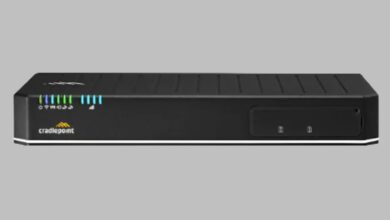Whether you own a small business or work as a company administrator, it’s crucial to connect your systems.
Sometimes, it can be difficult to manage a business with multiple locations. While it’s possible to use a VPN to help share information, it’s also good practice to improve your data connectivity.
How can you make this happen? Keep reading to find out what you need to do.
Table of Contents
What Is Data Connectivity?
Data connectivity means being able to connect different data sources or systems so they can share information. There are different ways this connection can happen, and it’s an important idea in data and technology.
Data connectivity is very important for businesses and organizations. It lets data flow between systems, applications, and devices, so they can work well together.
Here’s a closer look at the data connectivity challenge:
The Siloed Data Problem
Data silos happen when information is stuck in different systems or departments, making it hard to access and share data smoothly. This fragmentation can hinder decision-making and collaboration within an organization.
Incompatible Data Formats
Another issue is the diverse range of data formats. Various data formats in different systems can make it difficult to integrate and analyze.
Data Security Concerns
Data connectivity often raises security concerns. As data flows between systems, there’s a risk of data breaches, leaks, or unauthorized access. Ensuring that your data remains secure while maintaining connectivity is paramount.
Solutions to Enhance Data Connectivity
Let’s figure out how to make data connections between systems better, now that we know the issues.
Implement Data Integration Tools
Utilize data integration tools that can bridge the gap between different systems. You can use these tools to collect, change, and move data between different platforms. The tools also make sure the data stays the same. Popular options include Apache Nifi, Talend, and Microsoft Power BI.
Utilize APIs
Application Programming Interfaces (APIs) are essential for enabling communication between different software systems. Many platforms offer APIs that allow you to connect and exchange data seamlessly. You can use APIs to pull data from one system and transfer it to another, solving the data silo issue.
Implement ITIL Service Strategy
ITIL Service Strategy includes making a clear plan to optimize technology use and align it with business goals. The systems are checked to ensure they align with the organization’s strategy and goals.
In addition, organizations should invest in dependable infrastructure. This includes fast internet and strong networking equipment. It helps systems communicate with each other.
Prioritize Data Security
Data security should be at the forefront of your data connectivity efforts. To keep your data safe as it moves between systems, use encryption, access controls, and authentication protocols. Regularly update security measures to stay ahead of potential threats.
Train Your Team
Enhancing data connectivity isn’t just about technology – it’s also about educating your team. Make sure your employees know how to handle data, follow security rules, and use data tools well. A well-informed team can significantly contribute to improved data connectivity.
The Path to Seamless Data Connectivity
In today’s world, businesses need data connectivity between multiple systems to succeed. Organizations can achieve smooth communication and data sharing by using the right strategies.
If you agree to these changes, you can work smarter, make wiser choices, and achieve more success. Don’t wait any longer, take action now and improve your data connectivity across multiple systems.
If you’re looking for more articles like this, make sure you check out the rest of our blog today!





